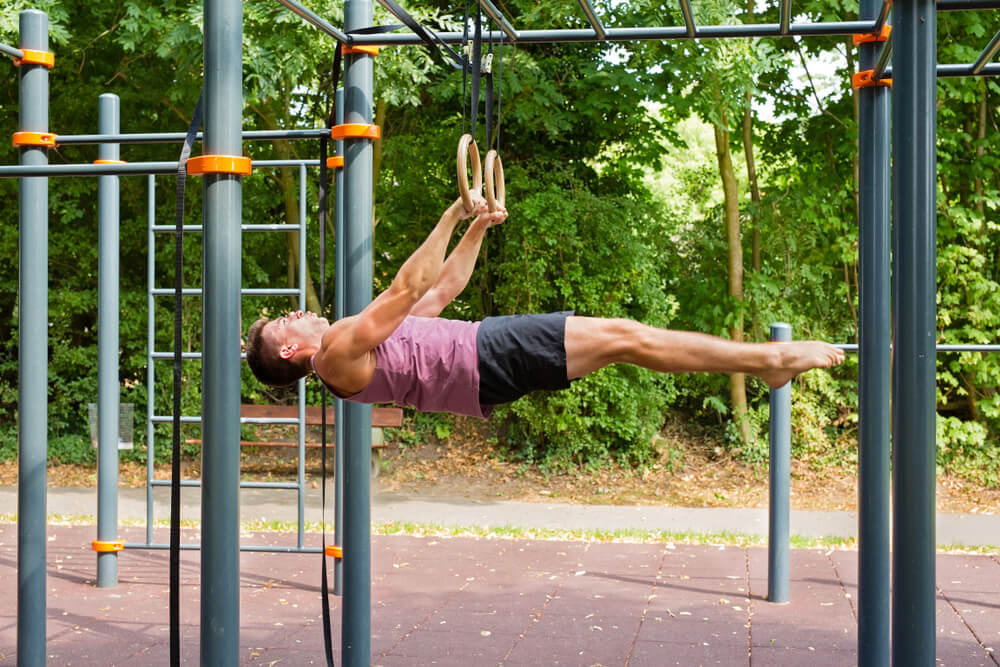Isometric training, a type of strength training where you simply hold a static contraction or position of a specific muscle is often seen as ineffective or for beginners. However, it can be a great training tool for many reasons. Here we look at the question, "can you actually build muscle with isometric training?" Let's see what the research says.
Understanding Isometric Training
Before we look at the science, we first must understand what isometric training is. In contrast to dynamic exercises, where muscles contract and relax through a full range of motion (e.g., during a traditional bicep curl), isometric exercises involve holding a static position for a certain period (holding the loaded portion of the curl for time).
Examples of isometric exercises you may be familiar with include planks, wall sits, and flexed arm hangs, etc.
The Science Behind Isometric Training and Muscle Building
A study by Journals Physiology shows that muscle adapts differently to isometric and dynamic training. In other words, the way your muscles respond to isometric training may vary compared to other forms of traditional strength training.
This study compared the effect of daily isometric holds versus traditional range of motion exercises on the growth and strength of the adductor muscle. The study showed that while both produced a significant increase in strength, the isometric training produced the greatest increase in size.
In addition, research has shown that isometric training at different ankles may also significantly influence muscle size and strength.
According to a study published on Taylor & Francis Online, both isokinetic and isometric strength were measured against traditional dynamic strength movements. What the researchers found was that training isometric leg exercises at various degrees of contraction could produced similar increases in strength and size as doing full range dynamic leg exercises like squats or leg presses.
Per the study:
Both legs trained at similar relative loads for the same duration. The quadriceps strength of each leg was measured isometrically (at four angles) and isokinetically (at three velocities) pre and post training. After 9 weeks of training, the increase in isokinetic strength was similar in both legs (pooled data from three velocities: dynamically trained leg, 10.7%; isometrically trained leg, 10.5%). Isometric strength increases were significantly greater for the isometrically trained leg (pooled data from four angles: dynamically trained leg, 13.1%; isometrically trained leg, 18.0%).
The Effects of Isometric Training on Tendon Properties and Muscle Output
Interesting insights also came from a study published in the Journal of Strength and Conditioning Research which compared plyometric and isometric training.
The study found that both isometric leg training and plyometric training significantly increased tendon stiffness and health, indicating that isometric training could improve tendon strength without the increased risk of injury that comes with performing high volume plyometrics.
Per the study:
Statistically similar increases in rate of force development and jump height were also seen for both training groups, with increases of 18.9 and 58.6% for the plyometric group and 16.7 and 64.3% for the isometric group, respectively. Jump height was found to be significantly correlated with tendon stiffness, such that stiffness could explain 21% of the variance in jump height. Plyometric training has been shown to place large stresses on the body, which can lead to a potential for injury, whereas explosive isometric training has been shown here to provide similar benefits to that of plyometric training with respect to the measured variables, but with reduced impact forces, and would therefore provide a useful adjunct for athletic training programs within a 6-week time frame.
The Verdict
The research suggests that isometric training can indeed contribute to muscle building, strength gains, and athletic performance. It can also induce changes at a higher intensity, increase the force-generating capacity of muscles, and influence muscle strength at different joint angles. Furthermore, isometric training can also have a positive impact on tendon properties with reduced risk of injury.
While the primary purpose of isometric exercises may not be for hypertrophy or muscle size increase, they can certainly play a crucial role in an effective overall fitness program. As with any fitness regimen, it's essential to incorporate a variety of training methods, including isometric exercises, to achieve balanced strength and muscular endurance.
Remember, before starting any new exercise regimen, it's always a good idea to consult with a knowledgeable fitness professional or a healthcare provider. They can provide guidance based on your individual health status and fitness goals.
Sources:






